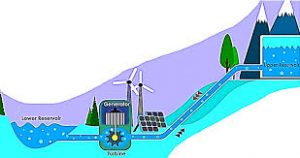Today’s Current Affairs: 3rd August 2024 for UPSC IAS exams, State PSC exams, SSC CGL, State SSC, RRB, Railways, Banking Exam & IBPS, etc
Table of Contents
Axis Of Resistance:

The Hamas leader was assassinated in an airstrike in Tehran and experts believe that Iran could hike up attacks against Israel through its allies – Axis of resistance.
- Axis of resistance is a coalition of Iranian-backed groups.
- The coalition’s name is said to be inspired by former US President George W Bush’s use of the term ‘axis of evil’ — referring to Iran, Iraq and North Korea.
- The roots of the ‘axis of resistance’ go back to the Iranian Revolution of 1979, which paved the way for radical Shia Muslim clerics to come to power.
- To expand its political and military influence in a region where most powers such as US-ally Saudi Arabia are Sunni-majority nations, Iran’s new regime began to support non-state actors.
- Another reason for this was to deter threats from Israel and the US — Iran has seen Israel’s creation in 1948 as a means for the US (and the West) to influence the region for its strategic interests.
- Group members
- Hezbollah: Shiite militant organization
- Hamas: Palestinian Sunni militant group in Gaza
- Palestinian Islamic Jihad(PIJ): Sunni Islamist militant group, Palestine
- Houthis: Zaydi Shia militant group, Yemen
Sloth Bear : Study

Scientists suggested that a careful study of sloth bear behaviour during its encounters with tigers can help people across South Asia avert deadly attacks.
- Sloth bears are one of the eight bear species found across the world.
- They are myrmecophagous, meaning, they find bugs and termites to be their most sought after meal.
- They live in a variety of dry and moist forests and in some tall grasslands, where boulders, scattered shrubs and trees provide shelter.
- They mainly inhabit the region of India, Nepal, Sri Lanka and presumably Bhutan.
- They have long, shaggy dark brown or black fur and curved claws, which are the longest out of any of the bear species.
- These bears are mostly nocturnal, foraging for food at night and resting in secluded locations
- Sloth Bear Sanctuaries in India: Daroji Sloth Bear Sanctuary (Karnataka), Jessore Sloth Bear Sanctuary (Gujarat).
- Conservation Status
- IUCN:Vulnerable
- Wildlife Protection Act, 1972:Schedule 1
- CITES:Appendix I
Vampire Star:

Researchers have made a groundbreaking discovery of a vampire star in the star cluster M67 located in the constellation Cancer, that has been rejuvenating its youth by sucking up material from a companion.
- Vampire Stars are known to astronomers as blue straggler stars (BSS) and are identified easily in star clusters.
- These stars, found in clusters, appear younger than their neighbours, defying simple models of stellar evolution.
- The mystery behind their youthful appearance has long puzzled astronomers, with theories suggesting they might be consuming material from companion stars.
- They are also known as Symbiotic Binaries because they are normally in pairs.
- The Vampire star will start as the smaller star but, nearing the end of the sucking process will inevitably be the larger of the two.
- The sucking star, when it has consumed a large amount from its victim, will become a blue star, also known as a blue straggler.
Highlights of the research:
- The scientists studied the surface composition of the vampire star in M67, called WOCS 9005, an open cluster in the constellation Cancer.
- They discovered that WOCS 9005’s atmosphere is unusually rich in heavy elements such as barium, yttrium, and lanthanum.
- These elements are typically associated with much older, more massive stars in their final stages of life.
- This star is expected to show chemistry very similar to the Sun, but they found that its atmosphere is rich in heavy elements.
- This chemical anomaly pointed to a fascinating possibility: WOCS 9005 had been “polluted” by material from a companion star.
- Using AstroSat’s Ultraviolet Imaging Telescope (UVIT), they detected significant ultraviolet emissions from WOCS 9005.
- The blue straggler star must have consumed most of this barium-rich material due to its gravitational pull, and is now presenting itself as a rejuvenated star.
Women Entrepreneurship Program:

The National Skill Development Corporation (NSDC) unveiled the Women Entrepreneurship Program to empower women entrepreneurs and spur economic growth.
- Women Entrepreneurship Program is designed to address the distinct challenges that women face when starting and growing businesses.
- This initiative aims to empower approximately 25 lakh women across India, providing them with the skills, knowledge, and resources needed to start and grow successful businesses.
- It is in partnership with Britannia Industries Limited.
- The initiative will also offer financial grants and feature their products and services on the Skill India Digital Hub, reflecting a strong commitment to fostering an inclusive environment for women entrepreneurs.
- NSDC, with support from the National Institute for Entrepreneurship and Small Business Development (NIESBUD), will offer free online self-learning entrepreneurship courses through the Skill India Digital Hub (SIDH).
- These courses, available in multiple languages, will cover crucial topics such as entrepreneurial skills, enterprise setup, finance basics, digital skills, and market analysis.
National Skill Development Corporation:
- It was established on July 31, 2008, as a not-for-profit public limited company under section 25 of the Companies Act, 1956.
Pumped Storage Hydropower:

Budget 2024-25 promised that “a policy for promoting pumped storage projects will be brought out for electricity storage.
- Pumped Storage Hydropower (PSH) is a type of hydroelectric energy storage.
- It is a fundamentally simple system that consists of two water reservoirs at different elevations.
- When there is excess electricity available, such as during off-peak hours or from renewable sources like solar and wind, it is used to pump water from the lower reservoir to the upper reservoir.
- When there is a demand for electricity, the water is released from the upper reservoir back down to the lower reservoir, passing through turbines that generate electricity.
- The system also requires power as it pumps water back into the upper reservoir (recharge).
- PSH plants operate much like conventional hydropower plants, except PSH has the ability to use the same water over and over again.
- The technology absorbs surplus energy at times of low demand and releases it when demand is high.
- The energy storage capacity of a PSH depends on the size of its two reservoirs, while the amount of power generated is linked to the size of the turbine.
- There are two main types of PSH:
- Open-loop:with either an upper or lower reservoir that is continuously connected to a naturally flowing water source such as a river.
- Closed-loop:an ‘off-river’ site that produces power from water pumped to an upper reservoir without a significant natural inflow.
Surrogate Advertising:

The Union Health Ministry recently asked both the Sports Authority of India (SAI) and the Board of Control for Cricket in India (BCCI) to bring in measures to prevent surrogate advertisement of tobacco and or alcohol related products by sportspersons.
- Surrogate Advertising refers to a form of advertisement that duplicates the brand image of one product to promote another product of the same brand.
- The word surrogate means a ‘substitute’. Usually, brands use surrogate advertising to promote products that cannot be advertised directly due to legal or social restrictions.
- Surrogate goods could either resemble a similar commodity or an entirely different product. Meaning, companies advertise their products and services by disguising them for some other product under the same brand name.
- From liquor to tobacco-related products, several brands have embraced this form of advertising to spread their word and uphold their image in the industry.
- In India, surrogate ads are common and used across several media platforms. For example, liquor brands use their brand names and logos to promote products like music CDs, soda, and more.
- While the target audience knows a particular brand’s niche, surrogate advertising helps you get your message across in a subtle and legal way.
- The motive behind doing so is to ensure that the customers can recall the original product in the disguise of another advertised product.
- This process is also called “brand extension”.
Disaster Management (Amendment Bill), 2024:

The Government recently introduced the Disaster Management (Amendment) Bill 2024 in the Lok Sabha.
- Disaster Management (Amendment Bill), 2024 seeks to amend the Disaster Management Act, 2005, which was enacted to provide for the effective management of disasters.
- The bill makes provision for the constitution of “Urban Disaster Management Authority” for State capitals and large cities having municipal corporations, except the union territories of Delhi and Chandigarh.
- The bill empowers the National Disaster Management Authority (NDMA) and the State Disaster Management Authorities to prepare the disaster plan at the national level and state level, respectively, instead of the plans made by the National Executive Committee and the State Executive Committees earlier.
- Furthermore, the NDMA will have the authority to appoint experts and consultants as necessary to fulfill its functions effectively.
- It seeks to create a “disaster database at national and State level.
- The database will include disaster assessment, fund allocation detail, expenditure, preparedness and mitigation plan, risk register according to type and severity of risk, and such other relevant matters, in accordance with such policy, as may be determined by the Union government.
- The bill will grant statutory recognition to existing bodies like the National Crisis Management Committee and the High-Level Committee.
- It also seeks to make provision for a “State Disaster Response Force” by the State Governments.
- A new Section 60A will be added to empower both the Central and State Governments to direct individuals to take necessary actions or refrain from them to mitigate disaster impacts, with penalties for non-compliance not exceeding ₹10,000.
Schistura sonarengaensis:

A group of scientists recently identified a new species of loach, named Schistura sonarengaensis, in Meghalaya’s South Garo Hills district, near the Bangladesh border.
- Schistura sonarengaensis is a new species of loach recently discovered.
- Loach is a freshwater bottom-dwelling fish and found across rivers in Southeast Asia.
- The new species is described from three cave-dwelling populations (Barak-Surma-Meghna drainage) in the South Garo Hills district of Meghalaya.
- The species is distinguished by its prominent eyes and 13-26 vertically elongated to circular black blotches on a grayish-black mid-lateral stripe, over a dull white or pale-beige body.
- Despite lacking the typical adaptations for subterranean life, such as complete loss of eyes or pigmentation, this species shows reduced pigmentation compared to surface-dwelling relatives.
- While these cave-dwelling fish are somewhat pale, they are not blind like other cave species found in Jaintia and Khasi Hills.
- The new species retains prominent eyes and is distinct from other Schistura species in the Barak-Surma-Meghna and adjacent river drainages of northeast India, except for Schistura syngkai.
Ransomware Attack Disrupts Bank Operations:

A ransomware attack severely disrupted the operations of at least 150-200 cooperative banks and Regional Rural Banks (RRBs) in India.
- The National Payments Corporation of India (NPCI) has identified the attack, which has primarily affected banks serviced by C-Edge Technologies Ltd., a joint venture between Tata Consultancy Services Ltd. (TCS) and State Bank of India (SBI).
- The ransomware attack targeted C-Edge Technologies Ltd., impacting their ability to provide services to cooperative banks and RRBs.
- Customers of the affected banks were unable to access payment systems, including Unified Payments Interface (UPI) and Aadhaar-enabled payment systems (AePS).
- Some RRBs, depending on their sponsor banks, continued to function normally as they use different technology service providers.
- The attack highlights the vulnerability of technology service providers and their critical role in maintaining the payment infrastructure.
- The incident underscores the need for robust cybersecurity measures to protect against such attacks in the future.
- Cooperation between NPCI, banks, and technology providers is crucial to swiftly address and mitigate the impacts of such disruptions.
Bharatiya Vayuyan Vidheyak 2024:

The Bharatiya Vayuyan Vidheyak is set to replace the British Era Aircraft Act 1934
- The Act has been amended multiple times to enhance safety, and oversight, and align with international conventions, creating ambiguities and confusion for stakeholders.
Important Provisions:
- Revised Aircraft Definition: Balloons and gliders were removed from the definition.
Empowerment for Rule-Making: - The Central Government is empowered to make rules to implement international civil aviation conventions.
- Examples include the Chicago Convention (1944) and the International Telecommunication Convention (1932).
- Increased powers for the Directorate General of Civil Aviation (DGCA).
- Enhanced authority for the Bureau of Civil Aviation Security (BCAS).
- Greater powers for the Aircraft Accident Investigation Bureau (AAIB).
- The Central Government is empowered to issue orders in emergencies for public safety, such as detaining aircraft.
- License and Certification Management: Central Government can suspend, cancel, or restrict licenses or certifications with a hearing opportunity for affected parties.
- Appeal Process: Introduction of a second appeal between the initial appeal and final appeal to the Secretary, MoCA.
Fully Accessible Route (FAR) : RBI

The Reserve Bank of India’s (RBI) recent decision to exclude new 14-year and 30-year government securities (G-Secs) from the Fully Accessible Route (FAR) may unsettle bond markets, potentially causing yield spikes for these securities.
- Experts warn that this exclusion could erode investor confidence, reduce participation, and increase yields due to diminished foreign portfolio investor (FPI) demand.
- FPIs generally prefer stable regulatory environments, and changes can lead to uncertainty and adjustments in investment strategies.
- Despite this, large domestic investors are expected to absorb the fresh supply of these tenors.
- RBI’s move aims to mitigate the potentially destabilizing effects of large capital flows in fixed-income markets by limiting investments in the more liquid segments.
- The Fully Accessible Route (FAR) regulations impose no limits on investments by Non-Resident Indian retail investors. NRIs can invest in Government Securities both on repatriable and non-repatriable bases, depending on the terms and conditions of the investment scheme.
mRNA Vaccine Development Against Human Avian Influenza (H5N1):

A new initiative to develop and distribute mRNA vaccines for human avian influenza (H5N1) in low- and middle-income countries (LMICs), in collaboration with the World Health Organization (WHO) and the Medicines Patent Pool (MPP).
- The project is part of the mRNA Technology Transfer Programme, established in 2021 to enhance vaccine production capacity in LMICs.
- Once successful, the knowledge and materials will be shared with other manufacturers to expedite vaccine development and strengthen pandemic preparedness.
- The initiative aligns with ongoing efforts to improve the sharing of influenza viruses and vaccine access under the Pandemic Influenza Preparedness Framework.
- The mRNA Technology Transfer Programme has already developed a platform for COVID-19 vaccine candidates, which is now being adapted for other diseases, enhancing global vaccine equity.
Krishna Raja Sagar (KRS) Dam:

Karnataka has begun releasing Cauvery water to Tamil Nadu from the Krishna Raja Sagar (KRS) dam and Kabini reservoir, following a directive from the Cauvery Water Management Authority (CWMA).
- Krishnaraja Sagar (KRS) Dam is on the river Kaveri and tributaries Hemavathi and Lakshmana Theertha in Mandya, Karnataka.
- Named after Maharaja Krishna Raja Wadiyar IV, built between 1911 and 1931, designed by Sir M. Visvesvaraya.
- Objectives: Irrigation, hydroelectric power, drought mitigation.
- Features: 2,621 meters long, 40 meters high, with 177 arch-type iron sluices, some automatic. Constructed with stone masonry and surki mortar.
- Reservoir: Covers 130 sq. km, Brindavan Gardens attached.
- Main source of irrigation for Mysore and Mandya, drinking water for Mysore and Bangalore, and power for the Shivanasamudra station. Water flows to Tamil Nadu’s Mettur dam.




